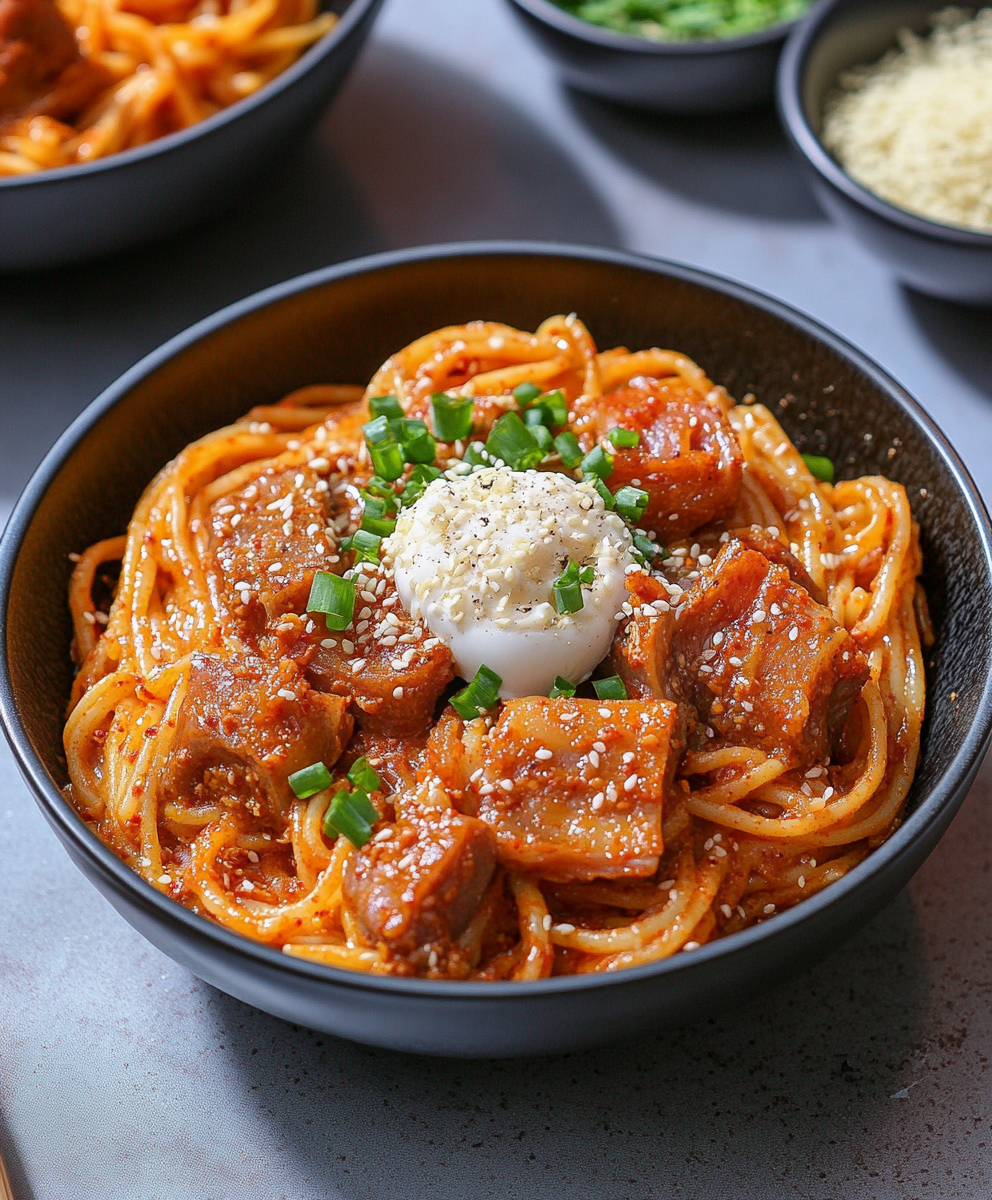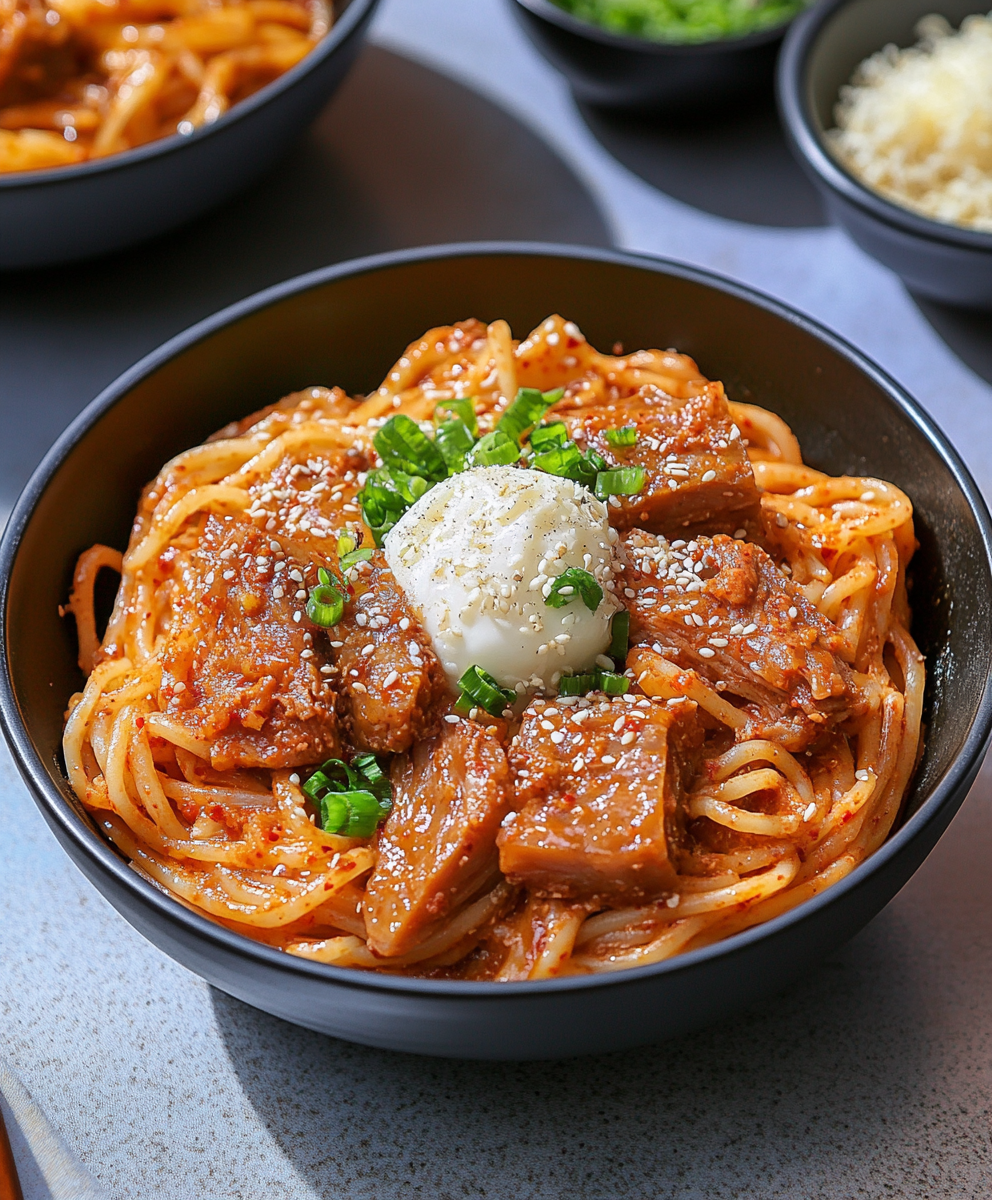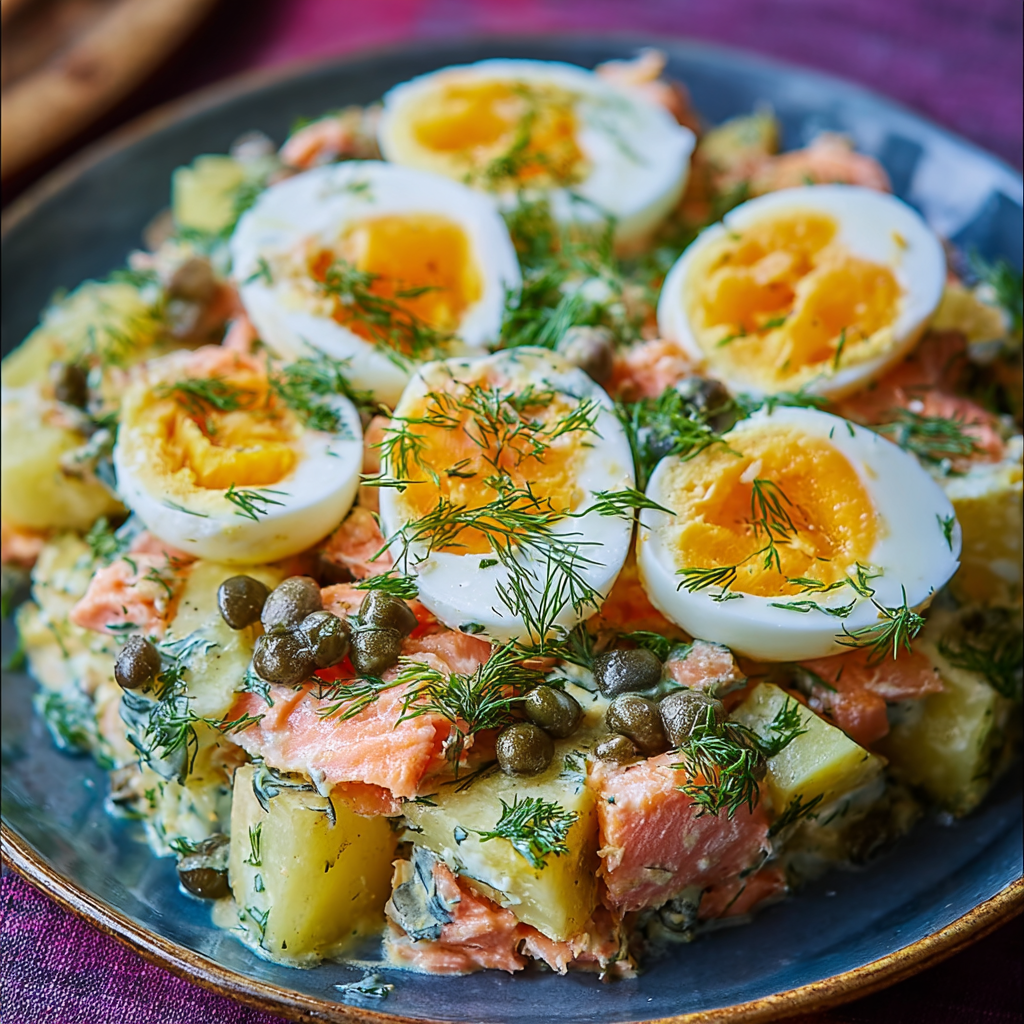
Succulent pork belly meets a spicy, umami-packed ssamjang cream sauce tossed with spaghetti and finished with parmesan and a soft-boiled egg for a fusion dinner that’s comforting and bold.

This creamy Korean ssamjang pasta was inspired by the pork belly ssam I always order at Korean barbecue. I discovered the idea one evening after a long week when I wanted the savory, salty, spicy notes of ssamjang but needed something quick and comforting that wasn’t the usual bowl of rice. The first time I tried it, the kitchen filled with an aroma of roasted garlic and fermented bean paste that immediately transported me back to summer nights around the grill. The combination of crisp pork belly pieces with a silky, slightly spicy cream sauce was unexpected but utterly addictive.
I love this dish because it balances texture and flavor so well: the chew of al dente spaghetti, the crisp edges of pan-fried pork belly, and a lush sauce that clings to each strand. It’s quick enough for a weeknight—ready in about 25 minutes—but special enough for when friends drop by. My partner declared it a keeper after the first bite, and our son asked for the egg on top every time afterwards. This is fusion cooking the way I like it: respectful of the original flavors, but playful and practical for a busy kitchen.
In my household this recipe became a ritual—easy enough to put together when returning from swim practice, but celebratory enough for casual dinner guests. The first time I served it at a small dinner, everyone reached for seconds and the leftover sauce was savored with crusty bread the day after. That immediate warmth and approval is why this dish stays in my regular rotation.

What I love most about this recipe is how quickly it comes together while still feeling indulgent. The pork belly gives intense savory notes and a satisfying textural contrast, and the ssamjang adds a depth you don’t get from typical pasta sauces. The soft boiled egg on top creates a luxe finish when the yolk breaks into the sauce, and my family always passes the kimchi around for that bright, fermented bite.

Store cooled leftovers in an airtight container in the refrigerator for up to 48 hours. Because the sauce contains heavy cream, avoid freezing if possible; freezing causes separation and changes texture. If you must store longer, freeze the pork belly separately and the pasta uncooked. To reheat refrigerated portions, warm gently in a skillet over low heat with a tablespoon of cream or milk and a splash of reserved pasta water to bring the sauce back together. Check seasoning after reheating because flavors can flatten in storage.
If pork belly is unavailable, substitute thick-cut bacon, pancetta, or even thinly sliced pork shoulder for a leaner option; adjust cooking time to render and crisp. For a vegetarian version, caramelize king oyster mushrooms or use smoked tofu to mimic umami and chew. Replace heavy cream with half-and-half for a lighter sauce, though it will be less rich. Reduce ssamjang to 2 tablespoons if you prefer less spice, or add an extra tablespoon for a bolder fermented flavor.
Serve with a simple green salad dressed in a citrus vinaigrette to cut through the richness. A side of kimchi provides acidity and crunch that brightens each bite. For presentation, place the soft-boiled egg in the center and scatter thinly sliced green onions and a dusting of extra Parmesan. This dish pairs well with a crisp lager or a light-bodied red wine, such as a Beaujolais or Pinot Noir.
While ssamjang originates from Korean barbecue, where it is typically used as a dipping paste for wrapped grilled meats, this combination with cream and pasta is a modern fusion riff. Korean cooks often adapt bold condiments into new formats, and ssamjang’s fermented soybean base offers deep umami similar to miso, making it a natural fit for enriching creamy sauces. This dish is an example of how traditional flavors can be reimagined in contemporary home cooking.
In spring and summer, lighten the dish with halved cherry tomatoes and a squeeze of lemon to add brightness. In fall and winter, swap spaghetti for bucatini or rigatoni to hold the sauce better and add roasted winter greens like kale or Swiss chard for color and nutrients. For holiday gatherings, multiply the recipe and finish with toasted sesame seeds and a few drops of sesame oil for a nutty aroma.
Cook the pork belly and prepare the sauce up to the simmer step, then cool and refrigerate separately from cooked pasta. On the night you serve, bring the sauce back to a gentle simmer, warm the pork pieces, and toss with freshly cooked pasta and reserved pasta water. This approach saves time and preserves texture compared with fully assembling in advance. Use shallow airtight containers to cool quickly and maintain quality.
Final thought: this ssamjang-infused pasta hits savory, spicy, and creamy notes in a way that feels both familiar and thrilling. It’s proof that a strong condiment and simple technique can transform pantry staples into something you’ll want to make again and again. Share it with friends, top it with a runny egg, and don’t forget the kimchi at the table.
Reserve at least 1 cup of pasta water and add it gradually to achieve a silky emulsion; you will not use all of it.
Use the pork belly rendered fat for extra flavor when sautéing garlic and ssamjang; it deepens the sauce.
If reheating, warm slowly over low heat with a splash of cream or milk and a little pasta water to re-emulsify the sauce.
To make a lighter version, substitute half-and-half for heavy cream but reduce simmer time since it can split at high heat.
This nourishing creamy korean ssamjang (쌈장) pasta recipe is sure to be a staple in your kitchen. Enjoy every moist, high protein slice — it is perfect for breakfast or as a wholesome snack any time.
This Creamy Korean Ssamjang (쌈장) Pasta recipe makes perfectly juicy, tender, and flavorful steak every time! Serve with potatoes and a side salad for an unforgettable dinner in under 30 minutes.

Heat a medium skillet over medium-high heat. Add pork belly slabs and pan-fry for 4 to 6 minutes per side until fat renders and edges crisp. Remove and cut into bite-sized pieces, seasoning lightly with salt.
Bring a large pot of salted water to a boil. Add 7 ounces spaghetti and cook until just shy of al dente according to package directions. Reserve about 1 cup of pasta water before draining.
In the skillet with reserved fat, reduce heat to medium, add 1 tablespoon butter and 1 tablespoon minced garlic, sauté 30 to 45 seconds, then stir in 3 tablespoons ssamjang and cook briefly to bloom flavors.
Pour in 3/4 cup heavy cream, bring to a gentle simmer, and cook for 2 to 3 minutes until the sauce thickens slightly, stirring to combine with the ssamjang mixture.
Add drained spaghetti, 1/3 cup grated Parmesan, and pork belly pieces to the pan. Toss while gradually adding reserved pasta water until the sauce becomes silky. Season with black pepper and red pepper flakes, adjust salt if needed, and serve with green onions and a soft boiled egg.
Last Step: Please leave a rating and comment letting us know how you liked this recipe! This helps our business to thrive and continue providing free, high-quality recipes for you.
Leave a comment & rating below or tag
@kitchenfunwithmy3sons on social media!


Golden baby potatoes roasted until crisp and tossed in ranch seasoning, Parmesan, and melty cheddar — an easy, crowd-pleasing side that’s ready in under an hour.

A fizzy blend of strawberry syrup, fresh lime, and lemon-lime soda, served chilled with vibrant garnishes for the ultimate refreshing beverage — boozy or not.

A satisfying Russian-style salad combining seared salmon, tender baby potatoes, soft-boiled eggs, dill, capers and gherkins — perfect for light lunches or a weekend gathering.

Leave a comment & rating below or tag @kitchenfunwithmysons on social media!
Enjoyed this recipe? Share it with friends and family, and don't forget to leave a review!
This recipe looks amazing! Can't wait to try it.
Comments are stored locally in your browser. Server comments are displayed alongside your local comments.

Join to receive our email series which contains a round-up of some of our quick and easy family favorite recipes.